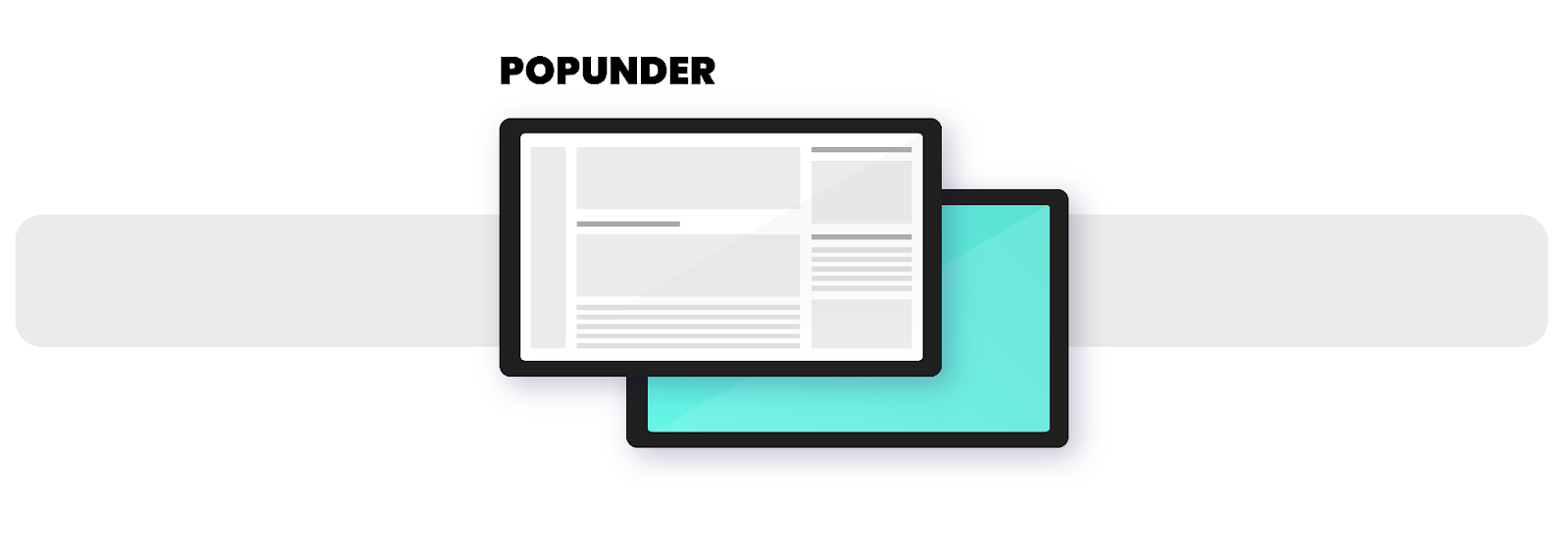Pop-under ads are a widely used but often misunderstood form of online advertising. Unlike pop-up ads, which appear over a webpage and demand immediate attention, pop-under ads open in a new window behind the main browser, making them less intrusive. This blog will explore on understanding pop-under ads, their types, advantages, disadvantages, and how they fit into modern advertising strategies.
Understanding Pop-Under Ads : What are They?
Pop-under ads are a type of display advertisement that opens in a separate browser window beneath the user’s active page. Unlike pop-ups, which demand immediate attention, pop-under remain unnoticed until the user closes or minimizes their primary browser window. This subtle approach makes them a preferred choice for advertisers aiming to increase engagement without disrupting user experience.
Understanding Pop-Under Ads : Types
- Standard Pop-Under Ads – These appear behind the main window and remain until the user exits their primary browsing session.
- Timed Pop-Unders – These ads appear after a user has spent a specific amount of time on a webpage, ensuring that only engaged users see them.
- Exit-Intent Pop-Unders – These ads trigger when a user is about to leave the site, serving as a final attempt to capture their interest.
- Frequency-Capped Pop-Unders – These ads limit their appearance to prevent overwhelming users, striking a balance between visibility and user experience.

Understanding Pop-Under Ads : PROs

Higher Engagement
Since users discover pop-unders after they finish browsing, they are more likely to engage with the content rather than dismiss it immediately.
Less Intrusive
Compared to pop-ups, pop-under ads do not interrupt the user’s experience, leading to a lower frustration level.


Better Ad Visibility
Many users close pop-up ads instantly, but pop-unders remain in the background, increasing the likelihood of interaction.
Effective for Lead Generation
Advertisers can use pop-under ads to drive sign-ups, promotions, or offers without negatively impacting the browsing experience.


Understanding Pop-Under Ads : CONs

Blocked by Ad Blockers
Many modern browsers like Brave, Safari and ad-blocking tools automatically prevent pop-under ads from displaying.
Delayed Attention
Users may ignore pop-unders or close them without interacting if they don’t notice them.


Negative Perception
Some users still associate pop-unders with spammy or intrusive advertising practices, affecting brand perception.
Best Practices
To maximize the effectiveness of pop-under ads, advertisers should follow these best practices:
- Use Frequency Capping – Limit the number of times a user sees a pop-under ad to avoid overwhelming them.
- Ensure Relevance – Display ads that align with the user’s interests and browsing behavior for better engagement.
- Optimize for Mobile – Since pop-unders function differently on mobile devices, ensure they are mobile-friendly.
- Test and Measure Performance – Run A/B tests to analyze which pop-under strategies work best and refine accordingly.
Relevance in Modern Advertising
In the evolving landscape of digital advertising, pop-under ads still hold value when used strategically. Advertisers should integrate them with other advertising formats like CPA advertising, CPM campaigns, or native ads to achieve a balanced and effective marketing strategy. Understanding pop under ads and how to effectively optimize pop under campaigns remains crucial for advertisers and marketers alike.
While pop-under ads may not be as widely accepted as other ad formats, they remain a powerful tool for driving conversions when implemented correctly.








Leave a Reply